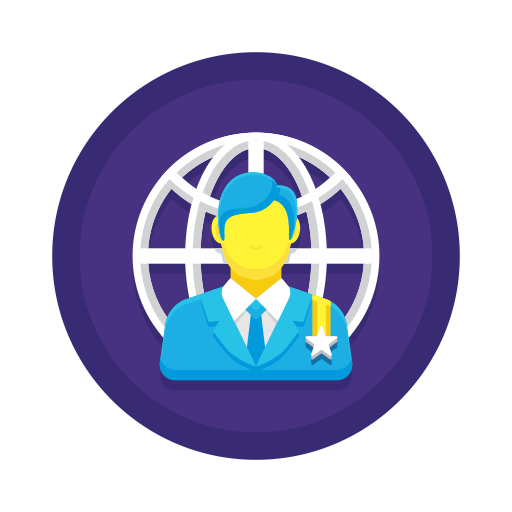Introduction #
With Noem.AI, you can create powerful custom workflows where multiple AI agents collaborate seamlessly to meet your business needs. By setting up workflows where different agents communicate and share data, you can automate complex, multi-step tasks—enhancing productivity and efficiency. This guide will show you how to build custom workflows tailored to your business using our range of specialized AI agents.
Step 1: Understanding AI Agent Collaboration #
Noem.AI’s platform allows for the integration of various AI agents that can perform specialized tasks and communicate with each other. These agents can share data, follow each other’s output, and ensure that tasks are completed in a coordinated fashion. Here’s how the collaboration works in a custom workflow:
- Agent Specialization:
Each AI agent on Noem.AI has specific expertise—ranging from content creation, marketing, branding, sales, and more. For example:- Brenda specializes in branding.
- Victor creates video content.
- Frank manages Facebook ad campaigns.
- Bob writes engaging blog posts.
- Data Sharing:
Agents can interact with each other by passing data between tasks. For instance, the strategy created by Brenda can be used by Frank to create targeted ad campaigns, while Victor and Bob can base their content creation on Brenda’s initial research. - Task Automation:
Once you configure your custom workflow, agents will automatically perform tasks in sequence or in parallel, ensuring efficient execution of complex operations with minimal manual intervention.
Step 2: Building a Custom Workflow for Your Needs #
To create a custom workflow where multiple AI agents collaborate, follow these steps:
1. Define Your Workflow Goal #
Start by identifying the goal of your workflow. Are you creating a branding campaign, launching a product, or automating content generation across multiple platforms? Understanding your end goal helps define which AI agents are involved and what tasks need to be performed.
Example Workflow Goal:
Generate a complete marketing campaign, including brand strategy, video content, blog posts, and targeted ads for social media.
2. Select Your AI Agents #
Choose the appropriate agents that will work together based on your goal. Each agent brings its own specialization to the workflow:
- Brenda (Branding Specialist): Analyzes company and competitor information to create a brand strategy.
- Victor (Video Content Creator): Produces engaging videos based on the brand strategy.
- Frank (Facebook Ad Specialist): Develops ad campaigns for social media based on the branding and video content.
- Bob (Blog Writer): Crafts blog posts based on video topics and overall strategy.
3. Configure Workflow Steps #
After selecting the agents, configure how they will interact and in what sequence they’ll perform their tasks. Here’s an example of how a custom workflow can be set up:
- Step 1: Brenda (Branding Specialist)
- Task: Analyze your company profile and competitor information.
- Output: Create a brand strategy document.
- Next Step: Send the brand strategy to Victor (Video Content Creator).
- Step 2: Victor (Video Content Creator)
- Task: Use the brand strategy to identify trending topics and produce a video.
- Output: A video file or video script.
- Next Step: Pass video information to Bob (Blog Writer) for blog creation.
- Step 3: Bob (Blog Writer)
- Task: Craft a blog post based on the video created by Victor.
- Output: A ready-to-publish blog post.
- Next Step: Send the blog post to your email for review.
- Step 4: Frank (Facebook Ad Specialist)
- Task: Leverage Brenda’s brand strategy to create a compelling Facebook ad campaign.
- Output: Facebook ad materials (images, copy, and targeting parameters).
- Next Step: Schedule the ad campaign and send a report to your email.
4. Monitor and Adjust Your Workflow #
Once the workflow is in place, monitor its performance through Noem.AI’s dashboard. You can:
- Track task progress and agent interactions.
- Adjust the workflow by adding or removing agents, or tweaking task parameters.
- View reports and results to ensure that the output aligns with your business objectives.
Step 3: Workflow Example – E-Commerce Marketing Campaign #
Let’s walk through a detailed example of how an e-commerce business could use a custom workflow to launch a marketing campaign:
Goal: #
Automate the creation and promotion of content for a new product launch.
Agents Involved: #
- Brenda (Branding Specialist): Creates the brand identity and strategy for the new product.
- Victor (Video Content Creator): Produces a product showcase video.
- Bob (Blog Writer): Writes a detailed blog post describing the product and its features.
- Frank (Facebook Ad Specialist): Develops Facebook ads promoting the product.
Workflow Process: #
- Brenda first analyzes the product and the market, then generates a detailed brand strategy outlining the messaging, target audience, and competitive edge of the product. She sends this strategy to both Victor and Frank.
- Victor receives the strategy and creates an engaging product showcase video highlighting the product’s key features. He also identifies trending video styles to ensure maximum engagement on social platforms. Victor sends the video to Bob for further content creation.
- Bob writes a blog post that complements the video, expanding on the product’s features and benefits. He ensures the blog post is SEO-optimized and ready for publication. The blog post and video are sent directly to your email for review.
- Frank uses Brenda’s brand strategy to create targeted Facebook ads, ensuring the campaign aligns with the video and blog content. He defines ad targeting parameters to reach the e-commerce company’s desired audience. Once set up, he schedules the campaign for launch and sends a performance report to your inbox.
Step 4: How Custom Workflows Help Your Business #
Custom workflows with AI agents provide several advantages to your business:
- Increased Efficiency: By automating multi-step tasks across different agents, you can save time and resources. The AI agents handle everything from strategy creation to content production, and even social media promotion.
- Improved Accuracy: Since the agents share data and follow each other’s outputs, you ensure consistency in messaging and strategy across all platforms. This reduces the risk of errors and ensures all content and campaigns are aligned with your business goals.
- Scalability: Custom workflows allow you to scale your operations easily. As your business grows, you can add more agents to your workflow, expanding the tasks they handle without requiring additional manual input.
- Optimized Performance: With specialized agents focusing on their areas of expertise, you achieve optimal results in branding, content creation, and digital marketing, helping you reach your business targets faster.
By creating custom workflows with multiple AI agents, you can automate and streamline various aspects of your business. Whether it’s branding, content creation, or marketing, Noem.AI enables you to design workflows where specialized agents communicate and collaborate to deliver high-quality results. Take advantage of Noem.AI’s powerful automation to save time, improve accuracy, and grow your business.
For more help with configuring custom workflows or selecting the right agents for your needs, contact our support AI Chatbot.










Leave a Reply
You must be logged in to post a comment.